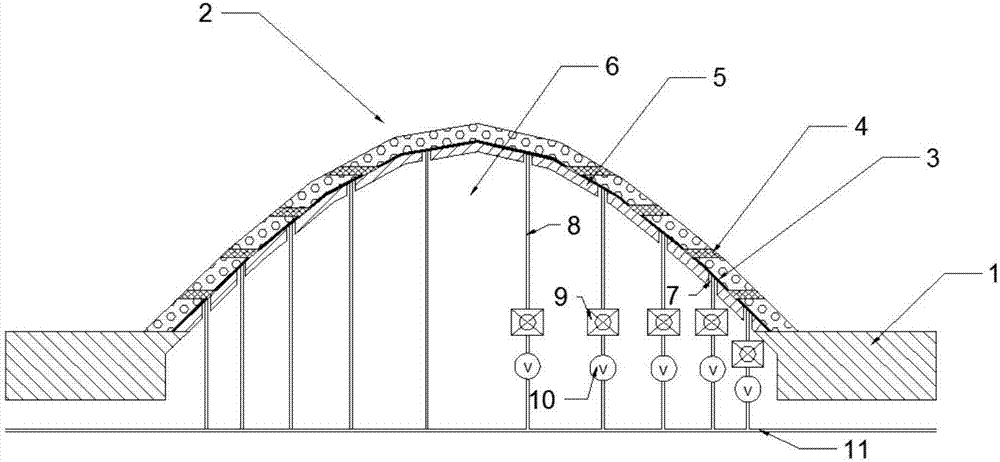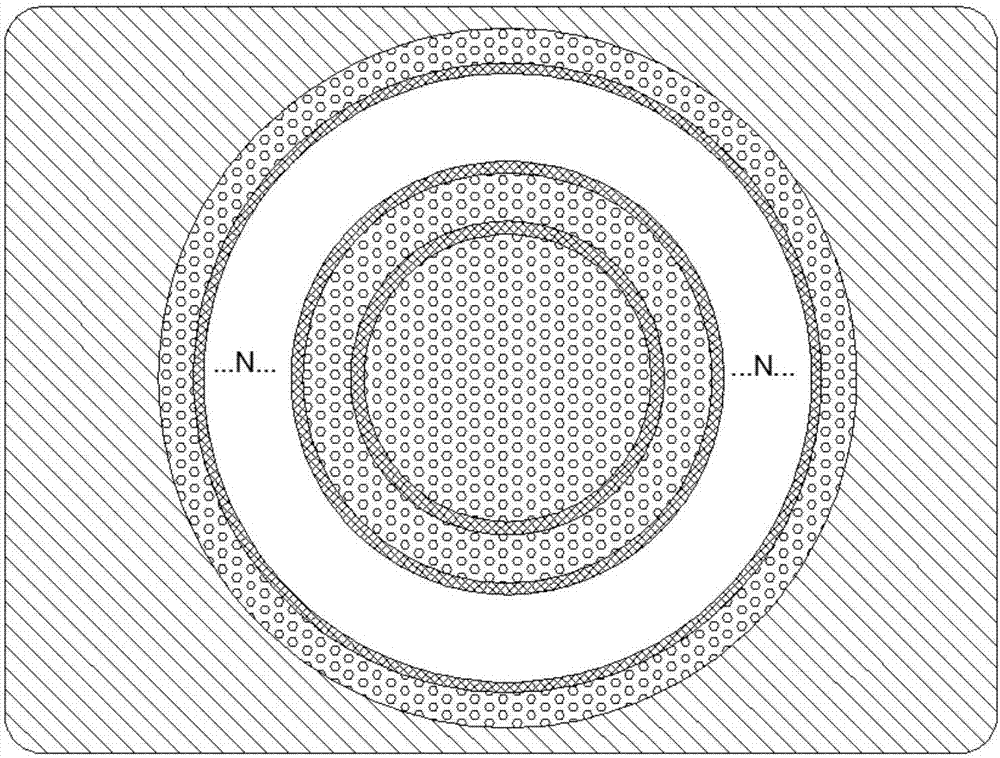Controllable three-dimensional thermal invisibility cloak based on multilayer two-dimensional topological materials
A two-dimensional topology and cloak technology, which is applied in the field of adjustable three-dimensional thermal stealth cloaks, can solve the problems that the thermal stealth function does not have tunability and cannot be turned on, and achieves the effects of improving computer performance, saving energy, and efficiently dissipating heat
- Summary
- Abstract
- Description
- Claims
- Application Information
AI Technical Summary
Problems solved by technology
Method used
Image
Examples
Embodiment 1
[0029] First, an internal support shell 5 is formed on the substrate 1 by a material growth process, as shown in Figure 2(a);
[0030]Then, through the material growth process and masking process, the designed two-dimensional topological material ring layers are superimposed layer by layer on the outer surface of the substrate 1 and the inner support shell 5 from bottom to top to realize N layers of two-dimensional topological material surface covering rings. Layer 2, as shown in Figure 2(b). Among them, the design of the surface ring layer and the internal support shell of the two-dimensional topological material can use algorithms such as finite time domain difference method and finite element method. The metal thin layer patch 3 is processed between the inner ring wall of the N-layer two-dimensional topological material surface covering ring layer 2 and the outer wall of the inner support shell 5 through a coating process.
[0031] Corresponding to each thin metal patch 3,...
PUM
| Property | Measurement | Unit |
|---|---|---|
| Width | aaaaa | aaaaa |
| Thickness | aaaaa | aaaaa |
| Width | aaaaa | aaaaa |
Abstract
Description
Claims
Application Information
 Login to view more
Login to view more - R&D Engineer
- R&D Manager
- IP Professional
- Industry Leading Data Capabilities
- Powerful AI technology
- Patent DNA Extraction
Browse by: Latest US Patents, China's latest patents, Technical Efficacy Thesaurus, Application Domain, Technology Topic.
© 2024 PatSnap. All rights reserved.Legal|Privacy policy|Modern Slavery Act Transparency Statement|Sitemap



